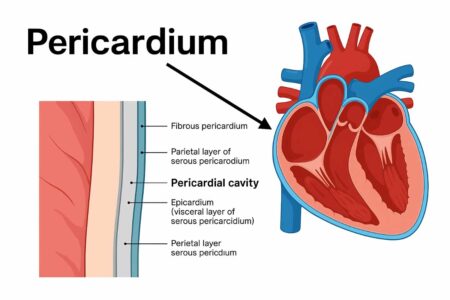Cerebral palsy and autism are two of the most common neurological disorders found in children of all ages. Both illnesses are classified as “wide range spectrum” disorders and have similar complications. That means they display a different variety of signs and symptoms in anyone who has been diagnosed with them. Thus, no children with autism or cerebral palsy are alike.
It may be surprising to know that children with cerebral palsy are predisposed to having autism as well. According to statistics, an estimated seven percent of children diagnosed with cerebral palsy were diagnosed with autism. As a result, many parents are unsure what to expect when their babies are diagnosed with both disorders. This article aims to explain the differences and similarities between cerebral palsy and autism and provide a helpful guide to dealing with both.
Cerebral Palsy
Cerebral palsy points to a group of disorders associated with damage or abnormal development in the brain. It is one of the most common birth injuries, with a prevalence of 1-4 in every 1000 births. A child with cerebral palsy often has difficulty moving from one place to another without support. Moreover, they are also unable to maintain their balance and posture.
In cases where cerebral palsy is suspected to have resulted from medical malpractice during childbirth, families may need an HIE attorney to navigate legal avenues for seeking justice and compensation. These specialized attorneys can provide invaluable support in investigating and pursuing claims related to birth injuries, ensuring families receive the assistance and resources they need to care for their child.
Signs and Symptoms
CP manifests an extensive range of symptoms. Some prominent ones are stiff muscles, floppy movements, jerky movements, or muscular tremors. Suppose you’re worried that your infant has cerebral palsy. In that case, the following blog post, cerebral palsy in infants, can assist you in making a particular diagnosis. A baby with cerebral palsy will have difficulty rolling over or crawling. They’ll have trouble holding their heads up if they’re under six months old. As they get older, they will also have difficulty walking. And they will often face challenges while doing fine tasks like unbuttoning their shirt or picking up something off the floor. If you notice these symptoms, it’s best to contact your family physician immediately.
Causes
There are many reasons why cerebral palsy can result in a child- one primary cause is reduced oxygen supply to the brain. During the child’s birth, they may often undergo a hypoxic state. The brain doesn’t have enough oxygen to allow for normal development. The damage particularly impacts the motor cortex, cerebellum, and basal ganglia- key brain centers where movement is controlled. Certain factors can increase the risk of cerebral palsy too. For example, males are more likely to have cerebral palsy than females. Moreover, factors like preterm births, twin births, or low baby birth weight can also increase the risk of cerebral palsy.
Management and Treatment
Cerebral Palsy treatment consists of a combination of treatments. While these treatments will not cure the condition, they may alleviate some child’s complications. Depending on the severity of the condition, your doctor may prescribe one or a combination of:
- Medication
Medication can help reduce the likelihood of convulsions and seizures. Again, the dosage administered depends on the degree of severity in the child.
- Therapy
Stem cell therapy is an excellent option for managing CP. It combines physical, occupational, and speech-related exercises to help keep muscle tone, minimize any verbal difficulties, or help the child become more independent.
- Surgery
Surgery is the last resort, as with any disorder. It can immensely help with muscle spasticity and tone.
Autism
Autism is a developmental disability that impacts a child’s personality, social skills, communicational aspects, and ability to regulate themselves. Children with autism often face speech and nonverbal communication challenges, i.e., control of facial expression, eye contact, and body gesture. Autism is better known as an autism spectrum disorder. It presents a broad range of conditions that are different in every child.
Causes
Many genetic and environmental factors influence autism. While there is no “one” cause for the condition, several factors increase the risk of developing autism. Some of which include:
- Having someone in the family with autism
- Genetic mutations
- Old aged parents
- Exposure to toxins
- Viral infections
- Low birth weight
- Certain drugs
Signs and symptoms
Some of the general symptoms of autism include- medical complications such as GIT-related issues, sleep disorders, seizures, and mental health disorders like anxiety and depression. If you’re worried about your child having autism, there are some signs you can check for. A child with autism will not respond to their name. They also tend to have difficulty responding to non-verbal cues like eye contact and smiling. They also tend to be hypersensitive and react to displeasure quite strongly. For example, if they do not like the taste of something, they’ll become agitated and cry. They also perform rapid and random movements like flapping their arms or repeating the same word.
Management and Treatment
Research suggests that early diagnosis of autism can help with the condition immensely. Some of the early treatments considered to help with autism include therapy. These therapy programs help children improve social interactions and perform day-to-day tasks.
Other than therapy treatments like medication, implementation of dietary regimes and augmentative communication courses may be considered. A Fragile X clinical trial is planned to confirm the positive results observed in a population of responders to assess the efficacy and safety of Zygel as a treatment for the behavioral symptoms of Fragile X Syndrome (FXS) known as the leading cause of inherited intellectual disability and the most common single-gene cause of autism spectrum disorder. All in all, there’s no known cure for autism and its related symptoms. However, autistic children can lead a better and more productive lifestyle with the right approach.
Final Thoughts
Autism and Cerebral palsy are two prevalent disorders that affect children of all ages. As a result, it’s essential to become familiar with the many symptoms, causes, and treatment options. So you can spot any warning signs in your child and address them appropriately.






